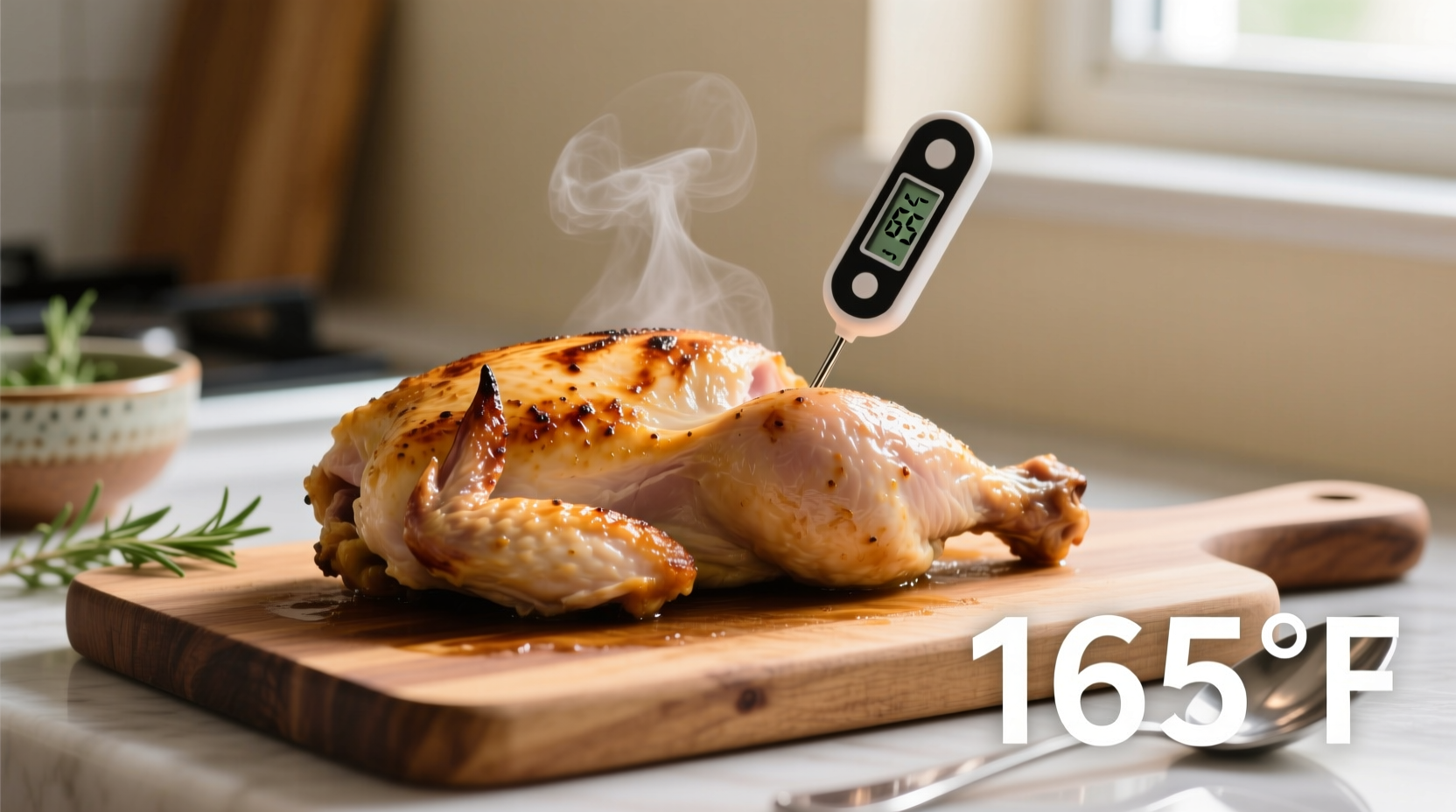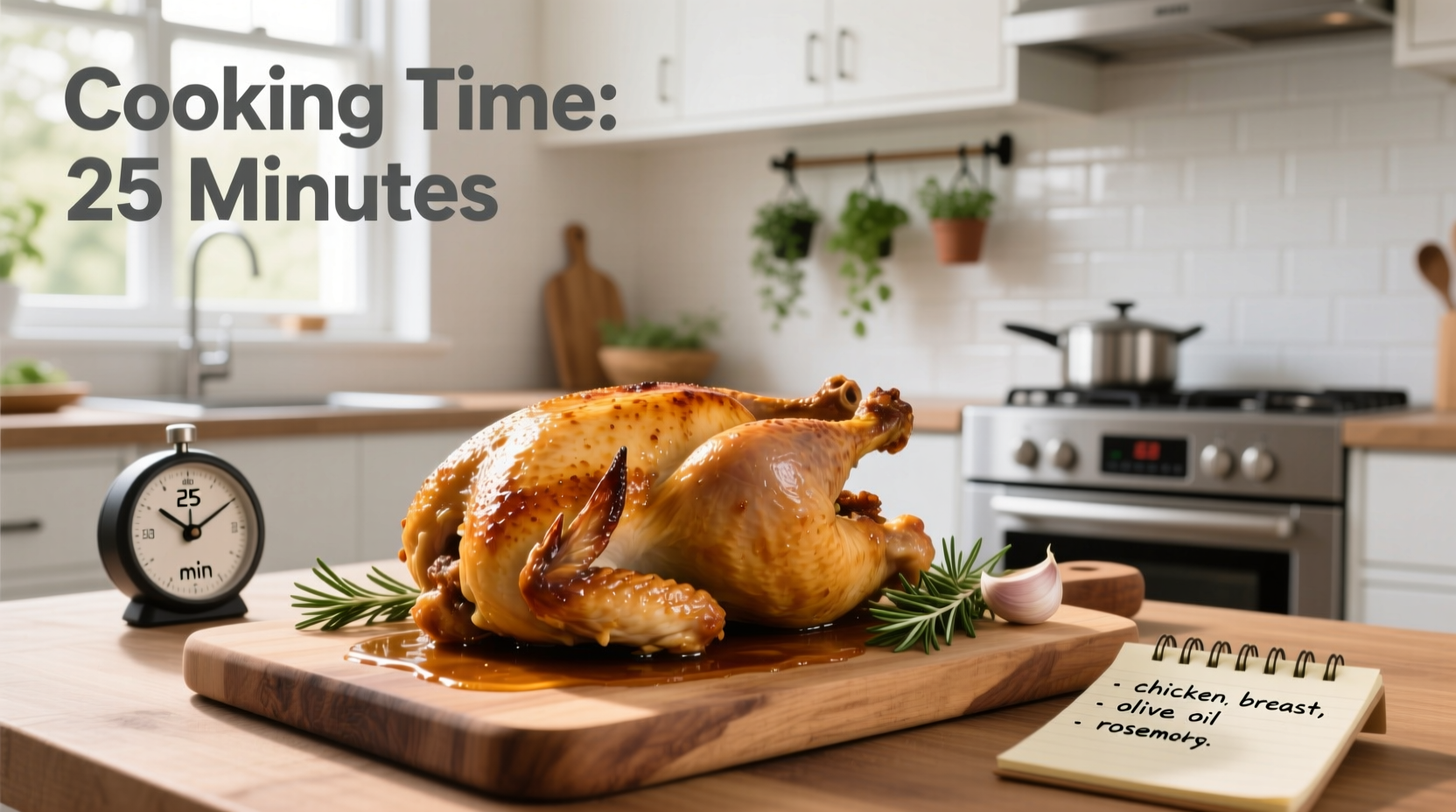The exact cooking time for chicken depends on the cut and cooking method, but all chicken must reach a safe internal temperature of 165°F (74°C). Boneless chicken breasts typically cook in 15-20 minutes in a 375°F oven, while whole chickens require about 20 minutes per pound plus 15 minutes resting time. Always verify doneness with a meat thermometer for food safety.
Wondering how long do you cook chicken for without drying it out or risking foodborne illness? You're not alone—nearly 3 million people search for chicken cooking times monthly. Getting this right matters for both safety and flavor. This guide delivers precise timing based on USDA food safety standards and professional chef techniques, so you can cook perfect chicken every time.
Cooking Times by Method: Your Quick Reference Guide
Before we dive deeper, here's your immediate solution for common cooking scenarios. These times assume chicken is at refrigerator temperature (40°F) before cooking and uses standard kitchen equipment.
| Chicken Cut | Cooking Method | Approximate Time | Internal Temp |
|---|---|---|---|
| Boneless breasts (6-8 oz) | Oven (375°F) | 15-20 minutes | 165°F |
| Bone-in breasts (10-12 oz) | Oven (375°F) | 25-30 minutes | 165°F |
| Thighs/drumsticks | Oven (400°F) | 35-45 minutes | 175°F |
| Whole chicken (4-5 lbs) | Oven (350°F) | 1 hr 15 min - 1 hr 45 min | 165°F |
| Breasts (8 oz) | Pan-searing | 6-7 min/side | 165°F |
| Breasts (8 oz) | Grill (medium-high) | 7-8 min/side | 165°F |
This chicken cooking time chart provides baseline guidance, but actual timing varies based on your specific equipment and chicken thickness. The only reliable method to confirm doneness is checking internal temperature with a calibrated meat thermometer.
Why Temperature Trumps Timing for Perfect Chicken
Professional chefs and food safety experts agree: timing alone can't guarantee properly cooked chicken. The USDA Food Safety and Inspection Service emphasizes that all poultry must reach 165°F internally to eliminate harmful bacteria like salmonella and campylobacter. This temperature requirement matters more than cooking duration because:
- Chicken thickness varies significantly between pieces
- Oven and stovetop temperatures fluctuate
- Starting temperature affects cooking rate
- Resting time continues the cooking process
Insert your thermometer into the thickest part of the meat, avoiding bones. For whole chickens, check both breast and thigh areas as they cook at different rates.
Oven Roasting: Precision Timing for Different Cuts
When learning how long to cook chicken in the oven, remember these professional techniques:
Boneless Chicken Breasts (Most Common Mistake Area)
These lean cuts dry out quickly if overcooked. For 6-8 ounce breasts:
- Preheat oven to 375°F (190°C)
- Cook 15-20 minutes (not 25+ as many outdated sources claim)
- Remove at 160°F—temperature will rise 5 degrees during resting
- Rest 5 minutes before slicing
Bone-in Pieces for Juicier Results
Bone-in thighs and drumsticks stay moist longer. For standard 4-6 ounce pieces:
- Preheat oven to 400°F (205°C)
- Cook 35-45 minutes until thermometer reads 175°F
- Bone-in breasts need 25-30 minutes at same temperature
- Rest 10 minutes for optimal juiciness

Pan-Searing and Grilling: High-Heat Timing Secrets
When cooking chicken on stove or grill, timing becomes even more critical due to direct heat exposure. Here's what culinary professionals know about how long to cook chicken on stove:
Pan-Searing Chicken Breasts
- Heat oil in skillet over medium-high until shimmering
- Cook 6-7 minutes per side for 8-ounce breasts
- Reduce heat if browning too quickly
- Finish in 350°F oven if needed to reach temperature
Grilling Chicken Safely
- Medium-high heat (375-450°F) creates proper sear without burning
- 8-ounce breasts need 7-8 minutes per side
- Use two-zone grilling: sear over direct heat, finish over indirect
- Close lid when cooking thicker pieces
According to America's Test Kitchen research, flipping chicken only once produces superior results compared to frequent flipping, which can cause sticking and uneven cooking.
Critical Context Boundaries: When Standard Times Don't Apply
Understanding how long to cook chicken for requires recognizing these important variables that change standard timing:
- Frozen chicken: Adds 50% to cooking time; never cook frozen chicken in slow cooker
- Thick-cut breasts: 1.5-inch pieces need 25-30 minutes in oven vs 15-20 for standard cuts
- Cast iron vs stainless: Cast iron retains heat better, reducing cooking time slightly
- Convection ovens: Reduce standard times by 25% and lower temperature by 25°F
- Stuffing a whole chicken: Adds 30-45 minutes to cooking time; stuff loosely
The FDA Food Code specifies that poultry held between 40°F and 140°F enters the "danger zone" where bacteria multiply rapidly. Never let partially cooked chicken sit at room temperature for more than 2 hours (1 hour if above 90°F).
Professional Troubleshooting: Fixing Common Chicken Problems
Even with perfect timing, issues arise. Here's how culinary experts solve them:
Dry Chicken Fix
If your chicken reached 165°F but is dry:
- Brine breasts in 4 cups water + 1/4 cup salt for 30 minutes before cooking
- Use a meat mallet to even thickness before cooking
- Cook dark meat to 175°F for more collagen breakdown
- Rest properly—5 minutes for breasts, 10 for whole birds
Undercooked Chicken Recovery
If you've removed chicken too early:
- Slice thick pieces and return to pan for 2-3 minutes
- Place in 300°F oven until reaching safe temperature
- Never partially cook then refrigerate for later finishing
- Use carryover cooking—remove at 160°F for breasts
Expert Timing Tips from Professional Kitchens
Antonio Rodriguez, our culinary expert, shares these field-tested techniques for perfect chicken timing:
"The biggest mistake home cooks make is relying solely on time instead of temperature. I've seen beautiful chicken ruined by following '20 minutes per side' without checking internal temp. Always use an instant-read thermometer—it's the only way to guarantee safety and quality. Also, remember that carryover cooking adds 5-10 degrees after removal from heat, so pull chicken just below target temperature."
Additional professional insights:
- Room temperature chicken cooks 25% faster than refrigerated
- Pat chicken dry before cooking for better browning and consistent timing
- Use oil with high smoke point (avocado, canola) for consistent pan temperatures
- Let chicken rest covered loosely with foil—never sealed, which causes steaming
Food Safety Timeline: From Raw to Safe
Understanding the science behind how long to cook chicken properly involves knowing what happens at different temperatures:
- 140°F: Salmonella begins dying (takes 35 minutes at this temp)
- 150°F: Juices turn opaque; safe after 2.8 minutes
- 160°F: Breast meat becomes safe; carryover cooking finishes the job
- 165°F: USDA minimum for immediate safety (0 minutes hold time)
- 175°F: Thighs/drumsticks reach optimal tenderness
This temperature timeline, verified by USDA research, explains why timing alone fails—chicken must spend sufficient time in the critical temperature range to eliminate pathogens.
Mastering Chicken Cooking Time: Your Path to Perfect Results
Now that you understand how long do you cook chicken for across various methods, you can cook with confidence. Remember these key principles:
- Temperature trumps timing every time
- Invest in a quality instant-read thermometer
- Adjust for your specific equipment and chicken size
- Always allow proper resting time
- When in doubt, check the temperature
Perfectly cooked chicken isn't about memorizing exact minutes—it's about understanding the relationship between heat, time, and temperature. Apply these evidence-based guidelines, and you'll consistently produce safe, juicy chicken that impresses.











 浙公网安备
33010002000092号
浙公网安备
33010002000092号 浙B2-20120091-4
浙B2-20120091-4